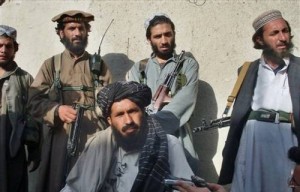Is Leadership Really the Center of Gravity of an Insurgency?
BY Herschel SmithFrom Time:
Military commanders are keen to wrap up the fights in Buner and Lower Dir within coming days in order to focus their fire on Swat, where an estimated 4,000 well-armed, well-trained militants are dug in on terrain favorable to insurgents. The army claims that the local Taliban there have been reinforced by militants from Waziristan, southern Punjabis who have fought in Kashmir and jihadists from Central Asia. “Ten percent of the militants have come from outside,” General Abbas told reporters in Islamabad on Saturday. “There should be no doubt that the money, arms and equipment [are] coming from the border,” he said, in a reference to Afghanistan as an alleged route for militants traveling to reinforce those fighting in Swat.
The military’s plan for retaking Swat — eliminating the Taliban’s command structure — has been given priority. “In an insurgency, the leadership is the center of gravity,” says General Abbas. Although the military claims to have killed a number of key local commanders during the current offensive, Fazlullah and his top lieutenants remain at large, several of them still using some 36 pirate-radio stations to issue propaganda messages. “The transmission can be heard for two to three minutes before it is jammed,” said General Abbas, “but then they begin using a different frequency.”
Aware that public support for the campaign is likely to ebb, the government and military recognize that they have a limited time frame in which to work …
We had previously remarked that in light of the Taliban slipping away into the night, for success to obtain with this offensive the Pakistan Army must stay and perform long duration counterinsurgency and stability operations. In spite of having no communication of their strategy up until now, they apparently (accidentally?) divulge one significant plank in their plan: killing “key” commanders.
Regular readers know how TCJ feels about that. The strategy is a loser. Granted, Baitullah Mehsud, the man that The Captain’s Journal loves to hate, should be targeted and killed, and it would be a good day for coalition forces were that to happen. TCJ would celebrate in the superlative, and It would be a holiday for us. The steaks would hit the grill, the champagne corks would be popped. This is less true of mid-level commanders who are a “dime a dozen.”
But the celebration would be short, and campaign wouldn’t be over if this happened, any more than the campaign in Iraq was over when Zarqawi was killed. The high value target campaign in Afghanistan has failed, and has at least given way to the quasi-plausible strategy of reclaiming the ring road. The Clausewitzian concept of center of gravity caused us to focus on a single thing, concept, target, or power center, perhaps coupled with a paucity of resources and troops.
But when a mid-level Taliban commander is killed, another pops up in his place, and so on through the campaign for the last half decade. We aren’t told who has taught the Pakistan Army Clausewitz. Perhaps they have learned it in their military classes where there also learn their neurotic preoccupation with India. Perhaps they have learned the high value target concept from the U.S. Wherever they have gotten it, they need to unlearn it in favor of counterinsurgency. Killing high value targets is no replacement for boots on the ground, and that for a long time.
Rather than focus on center of gravity, the Pakistan Army should think lines of effort and lines of operation.




